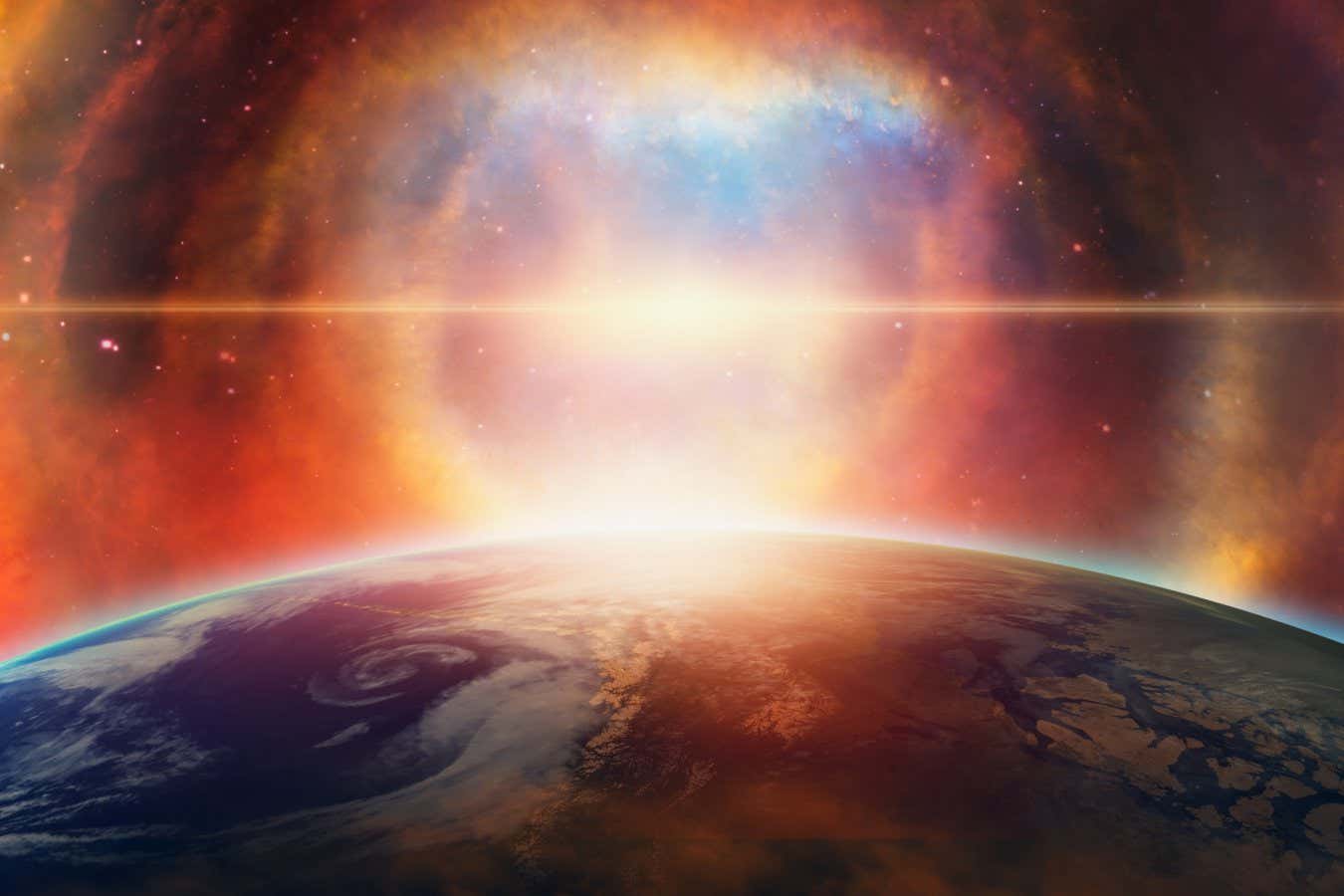Key Takeaways
- A spike in radioactive beryllium found in the Pacific suggests cosmic rays may have hit Earth 10 million years ago.
- Astronomers identified two potential supernova sources near Earth using data from the Gaia space telescope.
- The study indicates a 70% likelihood of a nearby supernova event coinciding with the beryllium spike.
An international team of astronomers has pieced together evidence suggesting that a supernova may have sent cosmic rays hurtling toward Earth approximately 10 million years ago. The investigation began when Dominik Koll and colleagues at the Helmholtz-Zentrum Dresden-Rossendorf discovered a significant spike in radioactive beryllium deep within metallic rocks, located five kilometers beneath the Pacific Ocean. Their analysis showed that this form of beryllium can only be produced when cosmic rays collide with Earth’s atmosphere, leading them to speculate that a historic supernova could be a contributing factor.
However, alternative explanations arose regarding the beryllium presence. One hypothesis suggested that the Sun’s magnetic shield was weaker at that time, potentially allowing cosmic rays to penetrate more deeply. Another theory posited that stronger ocean currents from the poles might have deposited the beryllium, as cosmic rays are known to be more intense in those regions.
To investigate the supernova hypothesis, Efrem Maconi from the University of Vienna and his team utilized the Gaia space telescope’s extensive data to track the positions and movements of billions of stars in the Milky Way. By analyzing the orbits of approximately 2,700 star clusters relative to the Sun over the past 20 million years, they estimated the probability of nearby supernova events during the time of the beryllium spike. Their findings revealed a 70% chance that a supernova occurred within about 300 light years of Earth ten million years ago, while there remained a 30% possibility that no supernova took place.
The research narrowed down two likely sources for the hypothetical explosion. The closest candidate is a comparatively young cluster called ASCC 20, located within 200 light years, while a more distant group named OCSN 61 also presents a probable connection. Moreover, geological evidence supports this theory, indicating that the solar system was situated in a particularly dense region of the galaxy at that time—a vast area enriched with gas, dust, and stars known as the Radcliffe Wave.
Koll expressed intrigue regarding the implications of Maconi’s findings, noting that these results prompt further investigation. Instead of dismissing the possibility of a supernova, the data suggests that more comprehensive modeling of star movements is necessary to ascertain whether a star was indeed responsible for the cosmic ray impact.
Connecting this to broader geological data, researchers have noted an observed spike in radioactive isotopes linked to cosmic dust around 7.5 million years ago, suggesting the potential for a timeline in which cosmic rays struck Earth first, followed by the slower travel of dust produced by the supernova. Although Koll acknowledges the challenges in verifying this sequence, it presents an interesting avenue for future research that could deepen understanding of cosmic influences on Earth.
The content above is a summary. For more details, see the source article.















